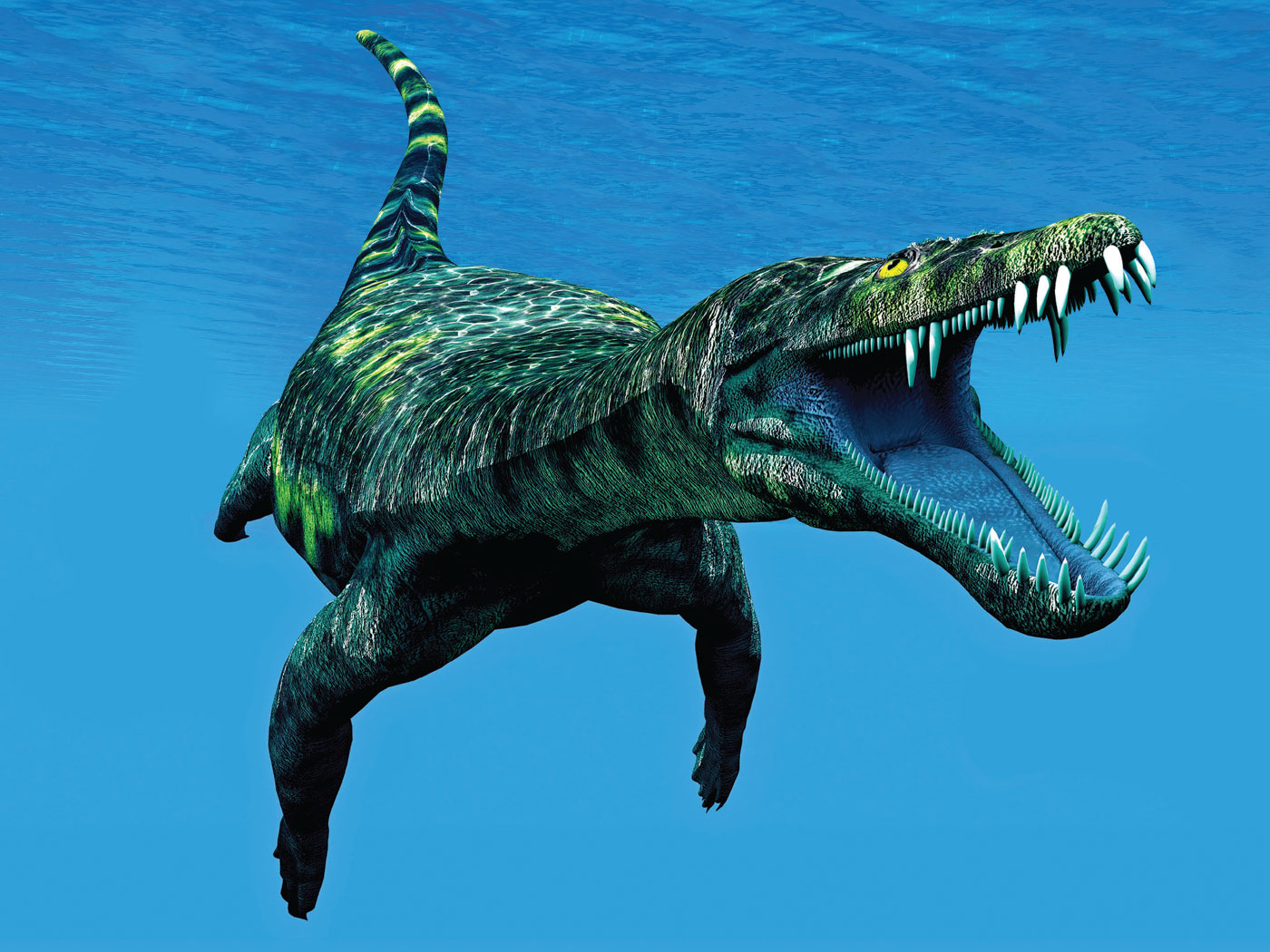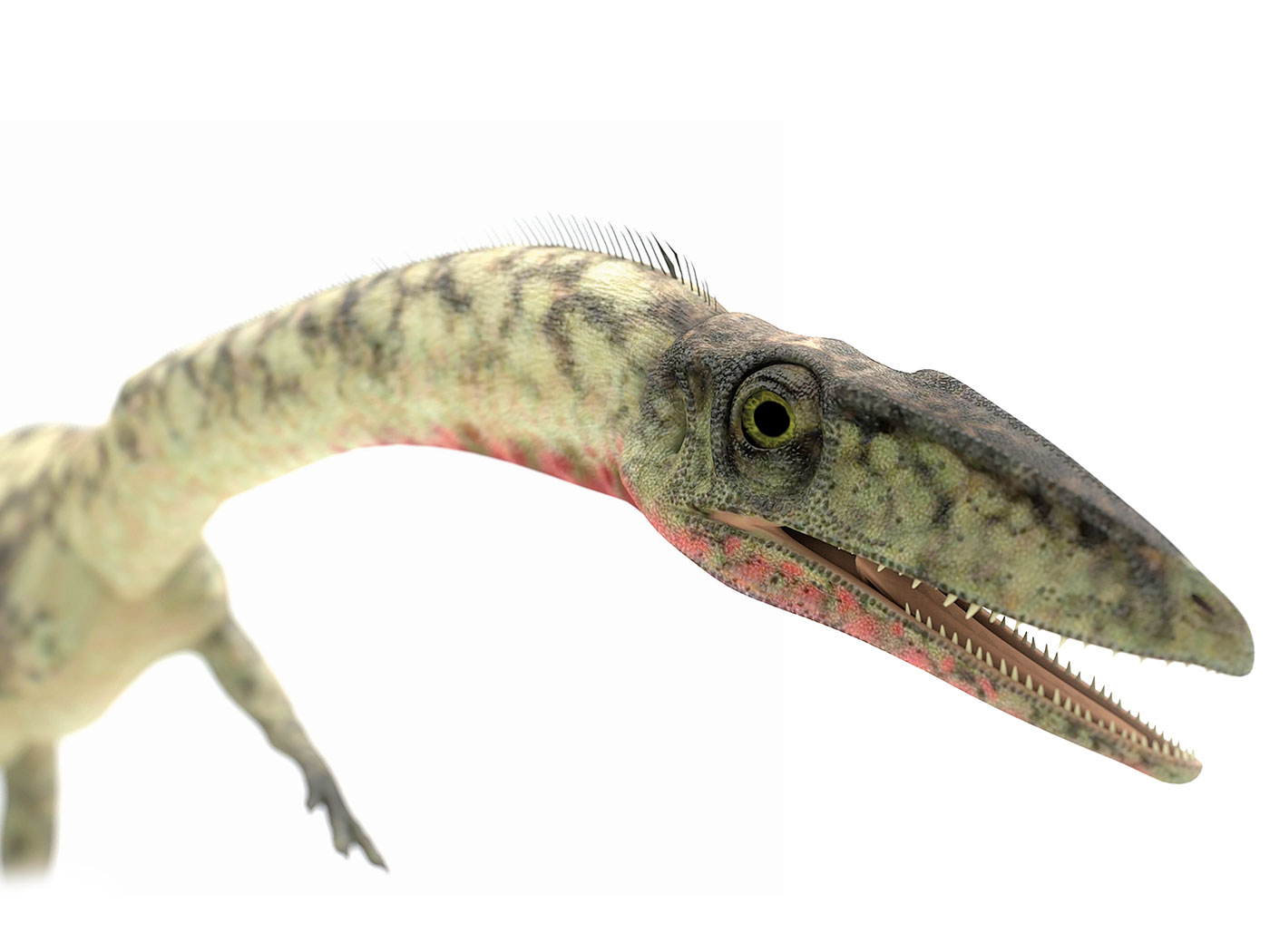There is the theory that all living things have arisen through a naturalistic, mechanistic evolutionary process from a single source, which itself arose by a similar process from a dead, inorganic world. This general evolutionary hypothesis is usually presented as an established scientific fact in science textbooks. All of the evidence that can be adduced in favor of this theory is thoroughly discussed in such texts, and it is often stated that all competent biologists accept the theory of evolution.
While it is true that most biologists accept evolution as a fact, there is a significant minority of competent biologists who do not accept this theory as the best interpretation of the known data. One of these who may be cited as an example is Dr. W. R. Thompson (see American Men of Science or Canadian Men of Science), whose credentials as a competent biologist need no defense. His objections to evolutionary theory may be found in his introduction to a 1956 edition of Charles Darwin’s Origin of Species entitled A Critique of Evolution.1 In 1963 a group of scientists formed the Creation Research Society.2 This relatively new organization now includes about 400 members, all of whom hold a master’s degree or doctorate in some Field of science. None accept the theory of evolution.
There is actually a considerable body of sound, scientific evidence that contradicts the theory of evolution, some of which appears to be absolutely incompatible with the theory. The importance of the nature of this evidence is never emphasized in textbooks used in our public school systems and colleges. In fact, this evidence is rarely, if ever, even mentioned. As a result, biology students are exposed to all the evidence that can be adduced in favor of the theory, but are not made aware of its weaknesses, nor the evidence that actually contradicts the theory. We must recognize, therefore, that such an educational process amounts to indoctrination in a particular world view or philosophy based on the concept that the origin of the Universe, the origin and diversity of life, in fact all of reality, must be explainable solely on the basis of the laws of chemistry and physics. The possibility of a Creator or the existence of a Supernatural Being is excluded. We are convinced that the reason evolutionary theory is so widely accepted today is because our scientists and biology teachers are the products of an educational system dominated by this naturalistic, mechanistic, humanistic philosophy.
The theory of evolution violates two of the most fundamental laws of nature—the First and Second Laws of Thermodynamics. The First Law states that no matter what changes may take place, nuclear, chemical, or physical, the sum total of energy and matter (actually equivalent) remains constant. Nothing now is being either created nor destroyed, although transformations of many kinds may take place. The Second Law states that every change which takes place naturally and spontaneously tends to go from a state of order to one of disorder, from the complex to the simple, from a higher energy state to a lower energy state. The total amount of randomness or disorder in the universe (entropy is a measure of this randomness) is constantly and inevitably increasing. Any increase in order and complexity that may occur, therefore, could only be local and temporary; but evolution requires a general increase in order extending through geological time. Amino acids do not spontaneously combine to form proteins, but proteins spontaneously break down to amino acids, and amino acids slowly break down to simpler chemical compounds. With careful control of reactants, energy input, and removal of product from the energy source (as is done in current "origin of life" experiments), man can synthesize amino acids from gases, and proteins from amino acids. But under any combination of realistic primordial earth conditions, these processes could never have taken place. This fact was adequately demonstrated by Hull who concluded that, "The physical chemist, guided by the proved principles of chemical thermodynamics and kinetics, cannot offer any encouragement to the biochemist, who needs an ocean full of organic compounds to form even lifeless coacervates."3 Hull was here referring to origin of life speculations.
Since the universe, like a clock, is running down, it is obvious that it hasn’t existed forever. But according to the First Law, the sum total of energy and matter is always a constant. How then can we, purely on a natural basis alone, explain the origin of matter and energy of which this universe is composed. The evolutionary continuum, from cosmos to man, is creative and progressive, while the First and Second Laws of Thermodynamics declare that known natural processes are quantitatively conservative and qualitatively degenerative. In every case, without exception, when these Laws have been subjected to test they have been found valid. Exponents of evolutionary theory thus ignore the observable in order to accept the unobservable (the evolutionary origin of life and of the major kinds of living things).
The evolutionary process has supposedly taken place via random mutational changes. This basic concept of the modern evolutionary theory is under attack even by some evolutionists. Salisbury4 has recently questioned this concept and it has come under attack by several mathematicians. A symposium was held at the Wistar Institute in 1966 at which these mathematicians and evolutionary biologists presented opposing views.5 One of the mathematicians, Dr. Murray Eden, stated that, "It is our contention that if ‘random’ is given a serious and crucial interpretation from a probabilistic point of view, the randomness postulate is highly implausible and that an adequate scientific theory of evolution must await the discovery of new natural laws—physical, physicochemical and biological" (emphasis added).6 It is the contention of Salisbury and of these mathematicians that the increase in complexity and the progress that has supposedly been accomplished by evolution through random changes would require a length of time billions of times longer than three billion years.
Random mutations and natural selection supposedly have been responsible for evolution, allegedly a creative and progressive process. Natural selection, however, is not creative since it cannot create anything new. It is a conservative force eliminating the unfit. Random mutational changes in an ordered system is a disordering or randomizing process and is thus degenerative, not progressive. This realization is slowly spreading among evolutionists today.
Whether evolution actually did happen or not can only be indicated by an examination of the historical record, that is, the fossil record. What type of evidence would support the evolutionary concept? Thompson has stated, "Therefore, if we found in the geological strata a series of fossils showing a gradual transition from simple to complex forms, and could be sure that they correspond to a true time-sequence, then we should be inclined to feet that Darwinian evolution has occurred, even though its mechanism remains unknown."1 If invertebrate gave rise to vertebrate, fish to amphibia, amphibia to reptile, reptile to bird and mammals—each transformation requiring millions of years and involving innumerable transitional forms—then the fossil record should certainly produce a good representative number of these transitional types. Thompson goes on to say, "That is certainly what Darwin would have liked to report, but of course he was unable to do so. What the available data indicated was a remarkable absence of the many intermediate forms required by the theory; the absence of the primitive types that should have existed in the strata regarded as the most ancient; and the sudden appearance of the principle taxonomic groups." Later on he states, " ... and I may note that the position is not notably different today. The modern Darwinian paleontologists are obliged, just like their predecessors and like Darwin, to water down the facts with subsidiary hypotheses which however plausible are in the nature of things unverifiable."
In the Cambrian geological strata there occurs a sudden, great outburst of fossils of animals on a highly developed level of complexity. In the Cambrian rocks are found billions of fossils of animals so complex that the evolutionists estimate they would have required one and a half billion years to evolve. Trilobites, brachiopods, sponges, corals, jellyfish, in fact every one of the major invertebrate forms of life are found in the Cambrian. What is found in rocks supposedly older than the Cambrian, that is in the so-called pre-Cambrian rocks? Not a single indisputable fossil! Certainly it can be said without fear of contradiction, the evolutionary predecessors of the Cambrian fauna have never been found.
Axelrod, a geologist and an evolutionist, has written:
"One of the major unsolved problems of geology and evolution is the occurrence of diversified, multi-cellular marine invertebrates in Lower Cambrian rocks and their absence in rocks of greater age. These Early Cambrian fossils included porifera, coelenterates, brachiopods, mollusca, echinoids, and arthropods. Their high degree of organization clearly indicates that a long period of evolution preceded their appearance in the record. However, when we turn to examine the pre-Cambrian rocks for the forerunners of these Early Cambrian fossils, they are nowhere to be found. Many thick (over 5000 feet) sections or sedimentary rock are now known to lie in unbroken succession below strata containing the earliest Cambrian fossils. These sediments apparently were suitable for the preservation of fossils because they are often identical with overlying rocks which are fossiliferous, yet no fossils are found in them" (emphasis added).7
George Gaylord Simpson, famous paleontologist and evolutionist, has termed the absence of pre-Cambrian fossils the "major mystery of the history of life."8 This great outburst of highly developed and complex living things is highly contradictory to evolutionary theory, but is exactly what would be predicted on the basis of special (divine) creation.
The fossil record ought to produce thousands of transitional forms. Instead we find that there is a regular and systematic absence of transitional forms between higher categories. The major invertebrate types found in the Cambrian are just as distinctly set apart when they first appear as they are today, the fossil record giving no indication that any of these major types have been derived from common ancestors.
The vertebrates supposedly evolved from an invertebrate. This is an assumption that cannot be documented from the fossil record. There is a vast gulf between the invertebrates and vertebrates not bridged by transitional forms. The first vertebrate, a fish of the class Agnatha, is a 100% vertebrate. Of its possible evolutionary origin, Ommanney has said, "How this earliest chordate stock evolved, what stages of development it went through to eventually give rise to truly fishlike creatures we do not know. Between the Cambrian when it probably originated and the Ordovician when the first fossils of animals with really fishlike characteristics appeared, there is a gap of perhaps 100 million years which we will probably never be able to fill."9 One hundred million years and no transitional forms! Incredible!
Fish supposedly gave rise to amphibian over a period of millions of years during which time the fins of the hypothetical ancestral fish gradually changed into the feet and legs of the amphibian. Yet not a single fossil has ever been found showing a part-way fin and part-way foot! The living amphibians. include three types: the salamanders and newts, usually with sprawling legs and tails; the frogs and toads, among the most highly specialized of all land vertebrates, having no tails and very long hind legs; the Apodans, a worm-like creature with no trace of limbs. No transitional forms can be found between these diverse living amphibians, or between them and fossil amphibians.10
Birds are alleged to have evolved from the reptiles. Yet no one has ever found a single fossil showing a part-way wing and part-way forelimb, or a part-way feather. Archaeopteryx, "the oldest known bird," had teeth but so did other birds found in the fossil record that were unquestionably 100% birds. Archaeopteryx had claw-like appendages on the leading edges of its wings. These same appendages, however. are found in a living bird in South America, the Hoactzin, and he is 100% bird. Archaeopteryx had vertebrae extending out along the tail, but was no more a transitional form between reptile and bird than the bat is a link between bird and mammal. Archaeopteryx had fully developed wings and feathers. It flew. It was definitely a bird, as all paleontologists agree. Lecomte du Nouy, an evolutionist, has said, "in spite of the fact that it is undeniably related to the two classes of reptiles and birds (a relation which the anatomy and physiology of actually living specimens demonstrates), we are not even authorized to consider the exceptional case of the Archaeopteryx as a true link. By link, we mean a necessary stage of transition between classes such as reptiles and birds, or between smaller groups. An animal displaying characters belonging to two different groups cannot be treated as a true link as long as the intermediary stages have not been found, and as long as the mechanisms of transition remain "unknown."11 Marshall has stated, "The origin of birds is largely a matter of deduction. There is no fossil of the stages through which the remarkable change from reptile to bird was achieved."12
As a matter of fact, the ability to fly supposedly evolved four times independently: in the birds, the flying reptiles (pterosaurs) now extinct, the insects, and in mammals (the bat). In none of these cases are there fossil transitional forms showing the ability to fly as evolving. Dr. E. C. Olson, an evolutionary geologist, has said, "As far as flight is concerned there are some very big gaps in the records."13 Concerning insects Olson says, "There is almost nothing to give any information about the history of the origin of flight in insects." Referring to pterosaurs Olson states " ... there is absolutely no sign of intermediate stages." After referring to Archaeopteryx as reptile-like Olson says "It shows itself to be a bird." Finally, with reference to mammals Olson states, "The first evidence of flight in mammals is in fully developed bats of the Eocene epoch." We thus have a most remarkable situation. Four times a marvelous transformation has taken place: terrestrial animals have evolved the power of flight. Each such transformation required millions of years and involved thousands of transitional forms. Yet none of these transitional forms can be found in the fossil record! Could it be that these transitional forms are not found simply because they never existed? Such evidence can be much more easily correlated within a creationist framework than within an evolutionary framework.
The examples given above are not exceptions, but as stated earlier the fossil record displays a systematic absence of transitional types between higher categories. Even with reference to the famous horse "series," du Nouy reports, "But each one of these intermediaries seems to have appeared ‘suddenly,’ and it has not yet been possible, because of the lack of fossils, to reconstitute the passage between these intermediaries.... The continuity we surmise may never be established by facts."14
We believe that the sudden appearance in the fossil record of highly developed forms of life in vast numbers and the sudden appearance of each major taxonomic group without apparent transitional forms indicates that there was actually no passage at all from lower forms to higher forms, but that each major taxonomic group was specially created and thus corresponds to the "kinds" described in the Book of Genesis.
Professor G. A. Kerkut, an evolutionist, in his illuminating book Implications of Evolution has stated "… there is the theory that all living forms in the world have arisen from a single source which itself came from an inorganic form.15 The theory can be called the ‘General Theory of Evolution’ and the evidence that supports it is not sufficiently strong to allow us to consider it as anything more than a working hypothesis" (emphasis added). We believe that special creation actually offers a far better explanation of the scientific evidence. To restrict the teaching concerning origins to a single theory, that of organic evolution, and to teach it as an established scientific fact, constitutes indoctrination in a humanistic religious philosophy. Such a procedure violates the Constitutional prohibition against the teaching of sectarian religious views just as clearly as if the teaching concerning origins were restricted to the Book of Genesis. In the spirit of fairness and of academic freedom we plead for a balanced presentation of all the evidence.
REFERENCES
1. W. R. Thompson; Critique of Evolution, an introduction to Origin of Species, Charles Darwin; E. P. Dutton and Co., New York, 1956.
2. 2717 Cranbrook Road, Ann Arbor, Michigan 48104.
3. D. E. Hull; Nature, 186, 693 (1960).
4. F. B. Salisbury: The American Biology Teacher, 33, 335 (1971).
5. P. S. Moorehead and M. M. Kaplan, Eds.; Mathematical Challenges to the Neo-Darwinian Interpretation of Evolution; Wistar Institute Press, Philadelphia, Penn. 1967.
6. M. Eden; Ref. 5, P. 109.
7. D. 1. Axelrod; Science, 128, 7(1958).
8. G. G. Simpson; The Meaning of Evolution; Yale University Press, New Haven, 1953, p. 18.
9. F. D. Ommanney, The Fishes; Life Nature Library, 1964; p. 60.
10. A. S. Romer; Vertebrate Paleontology, 3rd Ed.; University of Chicago Press, Chicago 1966; p 98.
11. L. du Nouy; Human Destiny; The New American Library of World Literature, Inc.; New York, 1947, p. 58.
12. A. J. Marshall, Ed.; Biology and Comparative Physiology of Birds; Academic Press, New York, 1960, p. 1.
13. E. C. Olson; The Evolution of Life; The New American Library, New York, 1966; P. 180.
14. L. du Nouy; Ref. I 1, p. 74.
15. G. A. Kerkut; Implications of Evolution; Pergamon Press, New York, 1960, p.157.* Dr. Gish is Vice President of ICR.
















